I’ve used the Freediver Recovery Vest (FRV) for a couple of years now. My wife and I cruise in Canada on our boat each summer. She doesn’t like to dive in cold water, so I don’t have a buddy. It seemed a shame to be living on the water and not be diving. The FRV fixed that. I use it while my wife is on the boat, or in our inflatable RIB. She is nearby and has Freedive safety training, so I’m not totally alone.
The FRV is a vest containing two air bladders and a battery powered electronic/mechanical actuator. A one-time disposable CO2 cylinder is triggered by the actuator to fill the bladders. Before putting on the vest the diver enters a maximum depth, and maximum time. If either one is exceeded during the dive, the bladders inflate to take the diver to the to the surface, floating face up. Another optional feature will inflate the vest 30 seconds after surfacing. This automatic surface inflation is cancelled if the diver pushes a button on an easily reached arm band. This button can only be activated between 15-30 seconds after surfacing. That way, the diver cannot cancel the inflation immediately on surfacing, and then blackout. This is an excellent feature when a diver does not have a surface safety buddy nearby.
There is a simple procedure to go through before putting the vest on over a wetsuit. This includes installing the CO2 cylinder, cocking the spring mechanism, and setting up the actuator etc., while following a checklist attached to the vest. After using the vest a few times, the procedure only takes about half a minute. Putting on the vest is simple, it has adjustable straps that allows a very large range of sizes. It is comfortable, to the point of not even being aware of it during a dive. The vest is thin and streamlined, so although it does increase drag, it appears to be very minimal. There is also an insignificant change in buoyancy with the vest on, so I use the same weight with or without the vest.
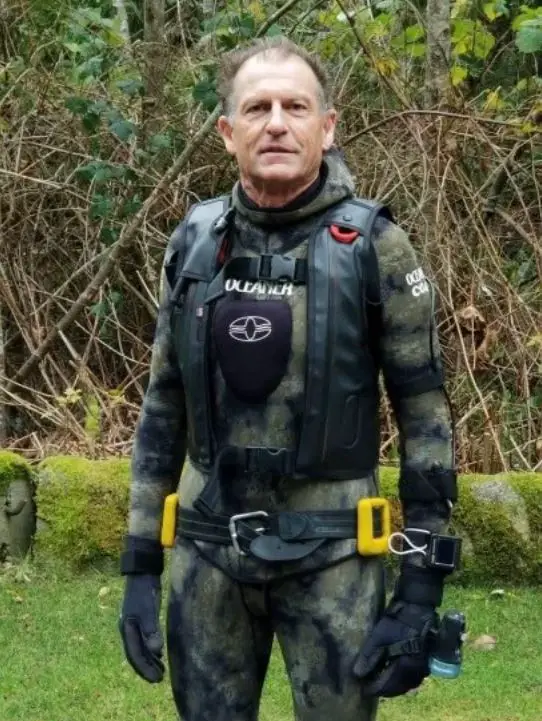
After use, a simple but crucial cleaning procedure involves rinsing in fresh water and soaking in a salt neutralizing solution. Once you have read the instructions, it is just about as easy as cleaning your wetsuit after a dive.
Recently I’ve been using the FRV locally (Howe Sound, near Vancouver, Canada) when diving with others. In our area, when going down 20, or 30 meters or more, usually in poor visibility, it is extremely unlikely a buddy will be able to locate and assist a diver at depth. It’s a chance we all take. The vest takes away much of the risk. It is also good when diving with inexperienced divers who may not be able to help me even at moderate depths.
The FRV is really cool! I’m an older diver, the risks are higher, and I really like the vest. The only drawback I can see is if diving in a group, and someone has trouble at a depth below the maximum depth I’ve set. Then I couldn’t do a rescue without taking off the vest, which would take a few seconds.
I am writing this while on a dive holiday in the Philippines. Here, the water is warm, the visibility is about 15 meters and I am diving with experienced divers. One would think there is no reason to wear an FRV. However, we have been recreational diving on some walls where the bottom is over 40 meters depth and it is impractical to set up a float and line. The whole idea of our dives is to explore the wall, so we want to dive well below where we are neutrally buoyant. If I were to have a problem below neutral buoyancy, it would take time for one of my buddies to come to my aid. But it would only take a split second to push the arm band button 4 times quickly, or pull a tab that causes the vest to inflate, or, in the case of black out, just wait for max time/depth to occur and be brought to the surface.
It is very comforting to have another level of safety, that is fully independent. And comfort increases relaxation, which is always good when diving.
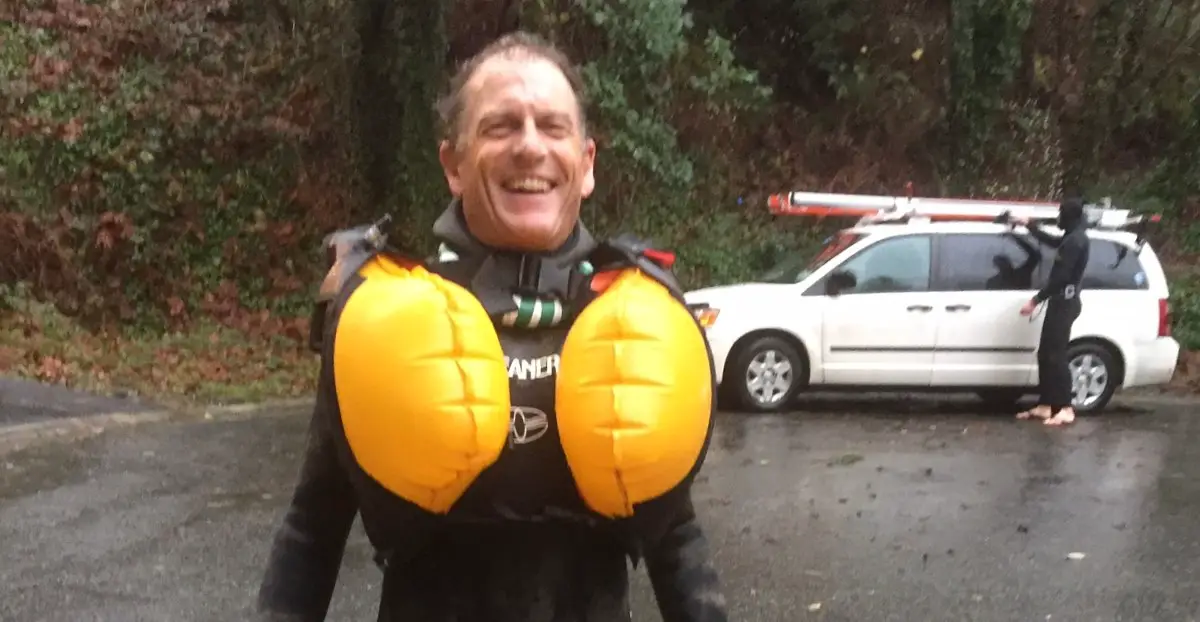
Even though the FRV is good for solo diving and group diving, I have to say that I would never recommend diving alone. The manufacturer of the FRV, Oceanic Safety Systems, never intended the FRV to replace a trained buddy. It is meant to complement the safety protocols already in place. But if you are determined to dive alone, then better to wear a vest.
This article was written by Don Campbell. Neither the author, nor freedivewire.com, are affiliated with http://oceanicss.com/ , the company which produces and sells the FRV.

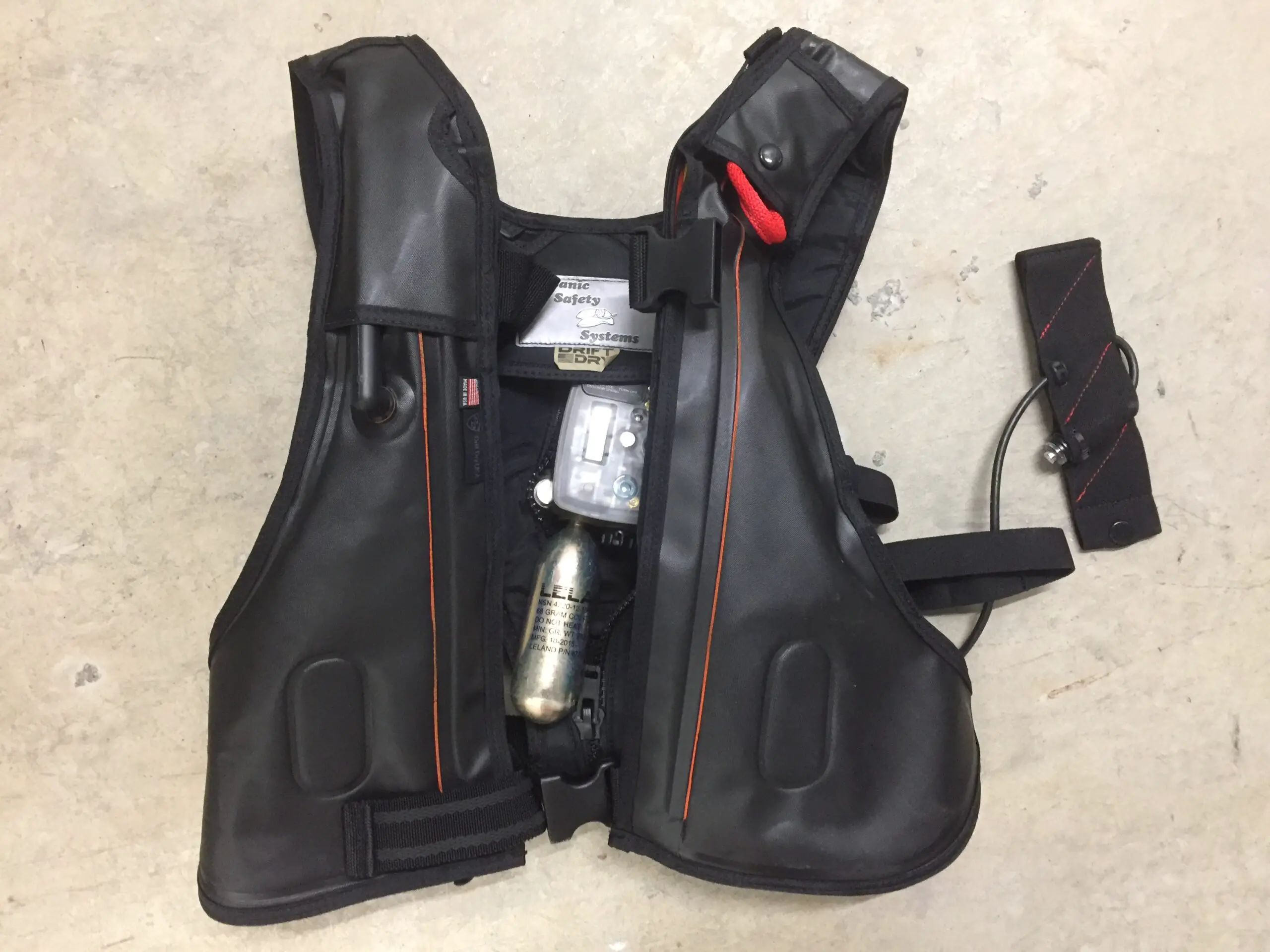
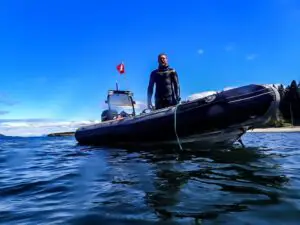

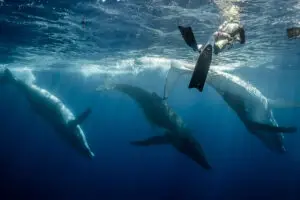
I sure like mine, very comforting when diving in crummy vis with a buddy whose ability you are not sure of. Service is top notch as well. I’ve had a few problems, all caused by me, and Terry took care of them instantly, just outstanding.
You have a newer model than mine, looks much sleeker. Mine has modest drag when diving no suit, no gun. Add a wetsuit and a big gun and its not noticeable, at all, forget I have it on. And yeah, I’ve set mine off by accident a couple of times, a hoot.
Where is your actuator mounted? on your shoulders or behind your back?
Hey Connor, yes I hardly feel mine when I dive. Don did mention it caused some drag but he only noticed when he took it off after an accidental inflation and kept diving afterwards.
In the photo you can see a gen.4, with the actuator on the back. Don reviewed the gen.3 I believe and the actuator is a bit more accessible on his.
The gen4 looks like a better idea. I’d like to try that one. It looks like it would have quite a bit less drag than mine.
THEY HAVE STOPPED SELLING THE FRV. This is sad. does anyone know a replacement to the FRV?
Hi Mike, you’re right, I was sad to hear it as well. It is a fantastic product. I do not know of a replacement on the market at this time.
I found a new vest on the market since Terry is no longer selling vests. These are several hundred dollars cheaper, although you have to buy a new actuator every time the vest inflates. You can buy the Sens07 vest here: https://www.provitatec.com/
Save diving everyone!
Thanks for sharing Shawn!